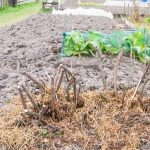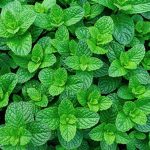Are you tired of spending hours pulling weeds from your vegetable garden? Weed cloth, also known as landscape fabric, could be the solution you’ve been looking for.
In this article, we will explore the benefits of using weed cloth in vegetable gardens, how to properly install it, choosing the right weed cloth for your garden, common mistakes to avoid, best practices for maintenance and how it compares to other weed control methods. Whether you’re a seasoned gardener or just starting out, incorporating weed cloth into your gardening routine could save you time and effort while promoting a healthier garden.
Weed cloth is a permeable fabric that suppresses weed growth while allowing water and nutrients to reach the soil. By effectively controlling weeds, it can reduce the need for manual weeding and chemical herbicides in your vegetable garden. In this section, we will discuss its advantages and how it can contribute to a more productive and enjoyable gardening experience.
Proper installation of weed cloth is essential for its effectiveness in preventing weed growth. We will delve into the step-by-step process of installing weed cloth in your vegetable garden to ensure optimal results. Additionally, we will provide guidance on selecting the right type of weed cloth to suit your specific garden needs and requirements. Whether you are dealing with persistent perennial weeds or seasonal nuisances, there is a suitable weed cloth available for your garden.
Benefits of Using Weed Cloth in Vegetable Gardens
Weed cloth, also known as landscape fabric or weed barrier, can offer several benefits when used in vegetable gardens. From reducing weed growth to conserving water, there are many advantages to incorporating weed cloth into your garden.
Some of the key benefits of using weed cloth in vegetable gardens include:
- Weed suppression: One of the main advantages of using weed cloth is its ability to suppress the growth of weeds. The barrier prevents sunlight from reaching the soil, inhibiting the germination and growth of unwanted plants.
- Water conservation: By blocking the evaporation of moisture from the soil, weed cloth helps to conserve water in your vegetable garden. This can be especially beneficial during dry spells or in regions with limited access to water.
- Soil protection: Weed cloth provides a protective layer over the soil, reducing erosion and preserving its structure. This can be particularly important for maintaining healthy and fertile soil in vegetable gardens.
Properly installed weed cloth can also help improve the overall appearance of your vegetable garden by providing a clean and tidy look. Additionally, it can reduce the need for chemical herbicides, promoting a more eco-friendly approach to weed control.
Ultimately, utilizing weed cloth in your vegetable garden can lead to easier maintenance and healthier plant growth by creating a more favorable environment for your crops while minimizing the competition from invasive weeds.
How to Properly Install Weed Cloth in Vegetable Gardens
Installing weed cloth in your vegetable garden is an effective way to control the growth of weeds and maintain a healthy environment for your plants. Proper installation is key to ensuring that the weed cloth functions as intended, and there are several important steps to follow.
First, prepare the soil by removing any existing weeds, rocks, and debris. Rake the soil to create a smooth surface for laying the weed cloth. It’s also important to ensure that the soil is evenly moist before installing the weed cloth.
Next, cut the weed cloth to fit the dimensions of your vegetable garden. Overlap the edges of the fabric by a few inches to prevent weeds from finding their way through any gaps. Secure the weed cloth in place using landscape fabric staples or pins, particularly along the edges and seams.
After laying down the weed cloth, make sure to create openings for your vegetable plants. Use a utility knife to carefully cut “X” shapes or slits in the fabric where you intend to plant. Avoid cutting too large of an opening, as this can compromise the effectiveness of the weed cloth in preventing weed growth.
Properly installed weed cloth will provide an effective barrier against weeds while still allowing water and nutrients to penetrate through to your vegetable plants’ root systems. Taking the time to install weed cloth correctly will ultimately save you time and effort in maintaining a healthy vegetable garden throughout the growing season.
| Steps | Considerations |
|---|---|
| Prepare soil by removing weeds and debris | Smooth surface for laying |
| Cut weed cloth to fit garden dimensions | Overlap edges and secure with landscape staples |
| Create openings for vegetable plants | Avoid cutting too large of an opening |
Choosing the Right Weed Cloth for Your Vegetable Garden
When it comes to choosing the right weed cloth for your vegetable garden, there are a few important factors to consider. Not all weed cloths are created equal, and selecting the right one can make a big difference in the long-term success of your garden. One of the key considerations when choosing weed cloth is its permeability.
This refers to the ability of water and nutrients to pass through the fabric and reach the soil below. Ideally, you want a weed cloth that allows for good permeability, as this will ensure that your plants receive the necessary moisture and nutrients for healthy growth.
Another important factor to consider when choosing weed cloth for your vegetable garden is its durability. Look for a weed cloth that is made from high-quality materials and is designed to withstand the rigors of outdoor use. A durable weed cloth will provide long-lasting weed control without easily tearing or degrading over time.
It’s also important to consider the UV resistance of the weed cloth. Exposure to sunlight can cause some types of fabric to deteriorate over time, so choosing a UV-resistant weed cloth can help prolong its lifespan in your vegetable garden.
Additionally, be sure to select a weed cloth that is designed specifically for use in vegetable gardens, as these are typically manufactured with materials that won’t leach harmful chemicals into the soil. By taking these factors into account, you can choose a high-quality weed cloth that will effectively suppress weeds while promoting healthy plant growth in your vegetable garden.
| Factors | Considerations |
|---|---|
| Permeability | Choose a weed cloth with good permeability to allow water and nutrients through |
| Durability | Select a high-quality, durable weed cloth that can withstand outdoor use |
| UV Resistance | Pick a UV-resistant fabric to prevent deterioration from sunlight exposure |
| Suitable for Vegetable Gardens | Ensure that the weed cloth is designed specifically for use in vegetable gardens and won’t introduce harmful chemicals into the soil |
Common Mistakes to Avoid When Using Weed Cloth in Vegetable Gardens
Improper Installation
One of the most common mistakes when using weed cloth in vegetable gardens is improper installation. This can result in weeds still poking through the fabric, defeating the purpose of using weed cloth in the first place.
It’s important to properly prepare the soil before laying down the weed cloth, ensuring that it is free from any debris and large clumps of dirt. Additionally, make sure to secure the edges of the fabric with landscaping pins to prevent it from shifting over time.
Using the Wrong Quality or Type of Weed Cloth
Another mistake to avoid is using the wrong quality or type of weed cloth for your vegetable garden. It’s important to choose a durable and UV-resistant fabric that can withstand sunlight and moisture without degrading. Additionally, consider the permeability of the fabric – while it should block out sunlight to prevent weed growth, it should still allow water and nutrients to penetrate through to the soil.
Forgetting About Maintenance
Many gardeners make the mistake of neglecting maintenance after installing weed cloth in their vegetable gardens. Over time, organic matter such as leaves and debris can accumulate on top of the fabric, providing a perfect environment for weeds to take root. Regularly check and clean off any debris on top of the weed cloth to prevent this from happening. Additionally, ensure that any mulch or rocks placed on top of the fabric are properly maintained to further inhibit weed growth.
Best Practices for Maintaining Weed Cloth in Vegetable Gardens
Maintaining weed cloth in your vegetable garden is essential to ensure its effectiveness in controlling weeds and promoting healthy plant growth. Proper maintenance will help prolong the life of the weed cloth, saving you time and effort in the long run. Here are some best practices for maintaining weed cloth in vegetable gardens:
1. Regular Inspections: Periodically inspect your weed cloth for any signs of damage, such as tears, holes, or fraying edges. Addressing these issues early on will prevent them from worsening and compromising the weed cloth’s effectiveness.
2. Cleanliness: Keep the surface of the weed cloth free from debris, such as fallen leaves, mulch, or soil buildup. This debris can provide a breeding ground for weeds and compromise the barrier created by the weed cloth.
3. Mulch Maintenance: If you use mulch on top of the weed cloth, make sure to replenish it as needed to maintain an adequate layer. This will not only enhance the appearance of your garden but also provide further protection against weeds and help retain moisture in the soil.
4. Repairing Damage: In case you spot any tears or punctures in the weed cloth, promptly repair them using patching tape or fabric patches designed for this purpose. Ignoring these damages can lead to weed growth and diminish the overall effectiveness of the weed cloth.
5. Proper Storage: During winter or when not in use, carefully remove and store your weed cloth to protect it from harsh weather conditions and potential damage.
By following these best practices for maintaining weed cloth in your vegetable garden, you can ensure that it continues to effectively control weeds and provide a healthy growing environment for your plants.
Weed Cloth vs Other Weed Control Methods in Vegetable Gardens
Weed control is a crucial aspect of vegetable gardening, as weeds can compete with the vegetables for nutrients, water and sunlight, leading to lower yields. There are various methods of weed control, including manual weeding, mulching, and the use of herbicides. However, one popular method that has gained traction in recent years is the use of weed cloth or landscape fabric.
Benefits of Weed Cloth
Weed cloth offers several advantages over other traditional weed control methods. The primary benefit is its effectiveness in suppressing weed growth by blocking sunlight from reaching the soil below. This not only reduces the need for manual weeding but also helps conserve soil moisture and prevent erosion. Additionally, weed cloth can also serve as a protective barrier against pests and certain soil-borne diseases.
Drawbacks of Other Weed Control Methods
While traditional methods like mulching and hand-weeding can be effective to some extent, they require regular maintenance and can be time-consuming. Mulch needs to be replenished periodically, while hand-weeding is labor-intensive and may not effectively eliminate all weed growth. On the other hand, herbicides may pose risks to human health and the environment if not used properly.
Weed Cloth vs Other Methods
When comparing weed cloth to other weed control methods in vegetable gardens, it becomes evident that it offers an efficient and low-maintenance solution for gardeners. Unlike mulch that may break down over time or herbicides that require careful application, properly installed weed cloth provides long-lasting weed suppression without compromising soil health or requiring frequent replacements. Moreover, it eliminates the need for continuous manual labor associated with hand-weeding while reducing reliance on chemical solutions for weed management.
Real-Life Success Stories of Using Weed Cloth in Vegetable Gardens
In conclusion, the use of weed cloth in vegetable gardens can greatly benefit gardeners in controlling weeds and improving the overall health of their crops. The real-life success stories shared by experienced gardeners serve as a testament to the effectiveness of utilizing weed cloth in vegetable gardens. From reducing maintenance time to increasing crop yield, the positive outcomes of using weed cloth are evident.
Gardeners who have adopted this method have reported significant reductions in weed growth, resulting in healthier and more abundant vegetable harvests. Additionally, the time saved on weeding and maintenance allows for a more enjoyable gardening experience. These success stories provide valuable insights into the practical benefits of incorporating weed cloth into vegetable garden maintenance routines.
The implementation of proper installation techniques and regular maintenance practices are crucial for maximizing the benefits of using weed cloth in vegetable gardens. Choosing the right type of weed cloth for specific garden needs is also essential. By avoiding common mistakes and following best practices, gardeners can experience firsthand how this method can significantly improve their vegetable growing endeavors. As evidenced by these stories, weed cloth has proven to be a valuable tool for achieving thriving and bountiful vegetable gardens.
Frequently Asked Questions
Can I Use Weed Control Fabric in Vegetable Garden?
Using weed control fabric in a vegetable garden can be beneficial in preventing weeds from taking over the garden space. However, it’s important to carefully choose the type of fabric and ensure it allows for proper drainage and air circulation to support the growth of the vegetables.
What Is the Best Weed Barrier Fabric for Vegetable Gardens?
The best weed barrier fabric for vegetable gardens is one that is permeable, allowing water, air, and nutrients to reach the soil while still blocking out sunlight to prevent weed growth. Look for a sturdy, UV-resistant fabric that will last through the growing season without deteriorating.
How Do You Install a Weed Barrier in a Vegetable Garden?
Installing a weed barrier in a vegetable garden involves several steps. First, prepare the soil by clearing it of any existing weeds or debris. Then, roll out the fabric over the designated area and secure it in place with stakes or other fasteners.
Cut holes in the fabric where you want to plant your vegetables, being careful not to damage the fabric. Finally, cover the edges of the fabric with mulch or soil to further secure it and improve its appearance in the garden.

If you’re looking to get into vegetable gardening, or are just looking for some tips on how to make your current garden better, then you’ve come to the right place! My name is Ethel and I have been gardening for years. In this blog, I’m going to share with you some of my best tips on how to create a successful vegetable garden.





